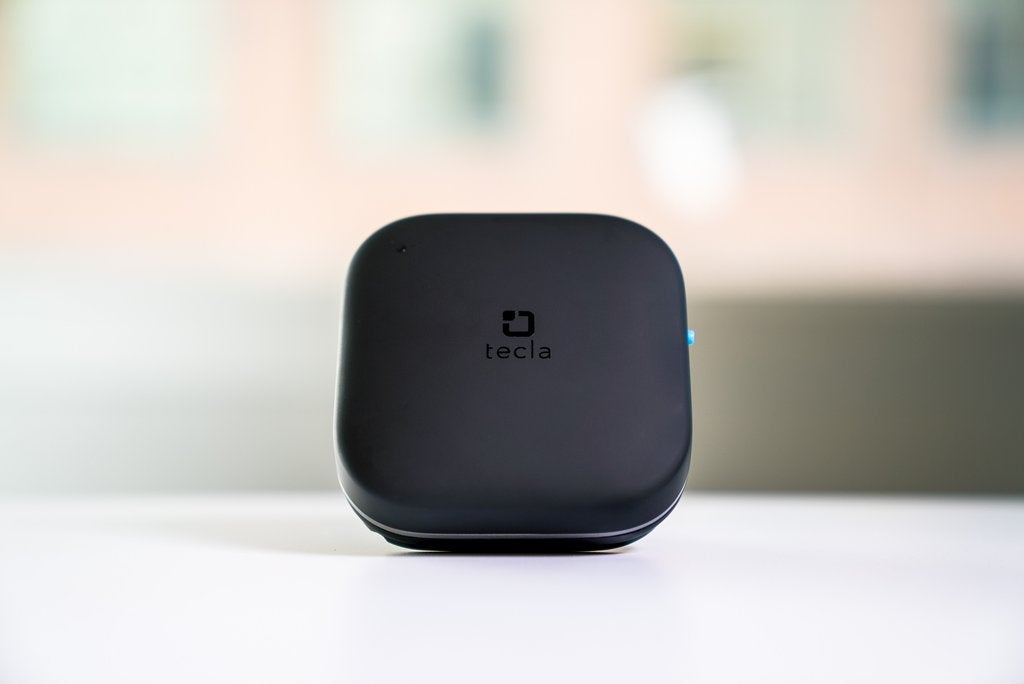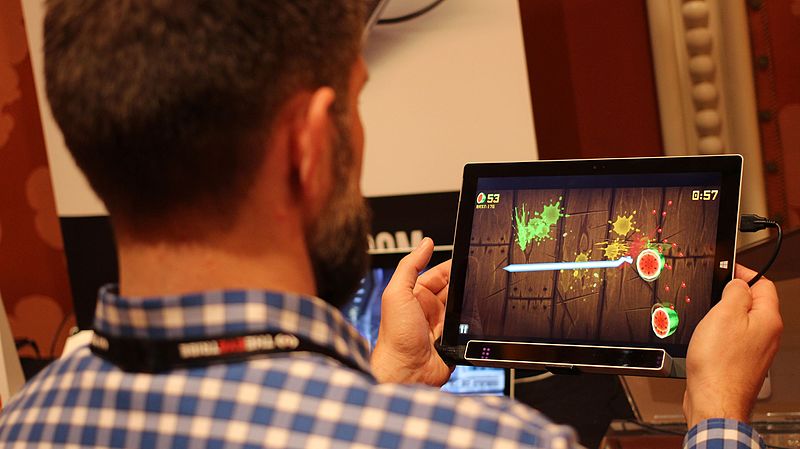Tech Tools for People with Limited Mobility Voice Assistants and Smart Home Integration

Discover 6 ways voice assistants can be used to improve your home
Voice assistants are an excellent addition to any smart home, offering various benefits that can be customized to suit your needs.
These smart home must-haves can help enhance your home life, offering everything from information access to home automation. With simple voice commands, they can streamline your routines, improve home security, and optimize lighting controls with minimal effort.
So, whether you want to make eco-home improvements or streamline your home's maintenance, integrating a voice assistant with other smart home features can give you complete control of your home.
This guide covers six ways you can use voice assistants to set up a smart home.
Ways voice assistants can be used in your home
'By integrating voice assistants such as Amazon Alexa, Google Assistant, or Apple HomeKit, users can effortlessly control connected devices and systems throughout their home,' says Finn Wheatley, Executive Consultant of Data & Technology at Xtrium. 'With the ability to understand natural language and respond to verbal prompts, voice assistants offer a seamless and intuitive way to interact with the smart home ecosystem.'
Google Home - Smart Speaker & Google Assistant
Brilliant Smart Home Control (Plug-In Panel)
1. Energy efficiency and sustainability
(Image credit: Nest)
Balancing convenience and energy efficiency is always a challenge when it comes to maintaining a home. However, integrating voice assistants with smart home devices and energy-efficient appliances can make it effortless for users to control and monitor their energy usage. This, in turn, contributes to a more eco-friendly and sustainable living space.
Taimur Ijlal, tech expertat Netify explains: 'By using voice assistants, you can set up automated routines that can truly optimize energy consumption. For example, you can configure your lights to turn off automatically when you leave for work or set thermostat schedules that adjust based on the time of day or whether a room is likely to be occupied.'
These smart routines can help cut energy bills while also minimizing the effort required to manage settings each day.
2. Health and wellness monitoring
(Image credit: King Living)
Voice assistants can be incredibly helpful in monitoring your health and fitness, and streamlining exercise routines.
By integrating voice assists with various health-tracking devices and apps, such as smart bedroom tech that tracks your sleep, you can easily monitor your vital signs, activity levels, and sleep patterns. You can also ask for information on your heart rate, calories burned, and other health metrics.
With this data, your voice assistant can provide you with insights and recommendations based on your health goals, such as suggesting healthy meal options or specific exercises.
Voice assistants can also guide you through workouts or exercise sessions, allowing you to focus on your fitness routine rather than looking up the next step. Additionally, you can ask your voice assistant to schedule exercise reminders to help keep you on track.
3. Streamlining routines
(Image credit: Getty Images)
When connected to other smart home appliances, voice assistants can be used to simplify a whole host of your daily routines and tasks, making them great features for a low-maintenance home.
Customize routines: Voice assistants can automate various tasks, so you can customize routines on a timer or by a verbal cue.
'For instance, when you say Good morning, your assistant could turn on the coffee maker, raise the blinds, and begin playing the news or your favorite playlist. For evening routines, you can set a relaxing ambiance with soft lighting and lower the thermostat,' explains Kelly Indah, tech expertat Increditools. 'The possibilities are nearly endless when it comes to customizing routines for convenience.'
Smart home control: Voice assistants can also be used to simplify tasks in different rooms.
For one, voice assistants can be used to streamline cooking and make a kitchen more accessible. They can work with smart kitchen appliances, provide status updates, suggest grocery list additions, and organize shopping. You can ask for measurement conversions, set timers, or have recipes read step by step.
For home chores like cleaning, you can voice-control your washing machine or set your remote vacuum to start.
Kelly IndahKelly Indah is a tech expert and security analyst at Increditools. She has worked in the tech field for over a decade, primarily as a software developer and security analyst. She also has a Master's degree in Computer Science and holds a Certified Information Systems Security Professional (CISSP) certification.
4. Improved accessibility
(Image credit: Google)
Voice assistants offer a hands-free experience, eliminating the need to physically operate switches and controls.This makes them an ideal way to future-proof your home for later life.
With voice assistants, you can effortlessly perform tasks such as turning on/off lights, opening curtains, checking the contents of the fridge, or locking/unlocking doors. This makes it easier for elderly people or people with disabilities to navigate their homes, particularly those with limited mobility or visual impairments.
'Voice-controlled technology is particularly useful for supporting seniors or people dealing with cognitive challenges,' explains AIexpert and Founder of AIPRMI, Christoph Cemper. 'Instead of disturbing alerts, reminders come across as kind messages tailored specifically for what each person needs.'
'Flexible settings allow families to program notifications with reassuring phrases aimed at avoiding anxiety or misunderstanding,' he continues. 'Messages may even change throughout the day to account for typical routines as well as personal details like the affectionate names loved ones use.'
5. Enhanced home security
(Image credit: JUNG)
Voice-enabled devices such as Ring or Nest can integrate with security systems, enabling users to monitor and control their home's security through vocal commands.
'Smart locks, doorbell cameras, and motion detectors can be voice-controlled, allowing users to arm or disarm alarms, lock doors, and monitor cameras with ease,' says Max Shak, tech expert and Founder of Ner Digital. 'Real-time updates and voice-activated alerts also provide updates on any suspicious activity, adding a layer of convenience and peace of mind,'
Some voice assistants are also equipped with the ability to recognize different voices, making them a secure way to grant access to trusted individuals.
$149The most famous wireless doorbell around, the Ring doorbell is top of our list of the best wireless doorbells for a reason.
ULTRALOQ U-Bolt Pro Smart Lock
$199This smart lock can be controlled withAlexa and Google Voice Assistant.
Google Nest Doorbell (battery)
$169.79
If you use a Google Home device as your voice assistant,Google Ecosystem is designed to integrate with Google Nest products.
6. Lighting controls
(Image credit: Caffe Latte)
'Voice assistants can be seamlessly integrated with smart lighting systems, enabling users to adjust lighting levels, color schemes, and ambiance with voice commands,' explains Max Shak, tech expert.'These can also be used for energy savings by remotely turning lights off in unoccupied rooms or scheduling lighting. This not only contributes to energy efficiency but also enhances the overall atmosphere of the home.'
You can use these Kasa Smart Light Bulbs, from Amazon, which are compatible with Alexa and Google Home,
Kelly Indah recommends that you carefully read privacy policies before using a voice assistant and exercise caution when providing critical information:
'You should also be watchful for third-party talents or apps that request greater data access than necessary,' she adds. 'To minimize possible eavesdropping, you may consider turning off microphones when not in use. Additionally, it is important to keep your software updated with the latest security updates.'
Five of the most innovative assistive devices for people living with quadriplegia
A number of advanced technologies have been used by scientists to help people with limited mobility to become more independent
Unlike some assistive devices, eye-tracking technology requires no muscle movement at all (Credit: Tobii Dynavox)
Improving quality of life for people with severe paralysis and lasting spinal cord injuries is one of healthcares biggest challenges but scientists have still been able to use modern technology to produce assistive devices for quadriplegia.
From mind-controlled exoskeletons to technology that is controlled using eye-movement, no stone has been left unturned in the search for a definitive piece of technology to help quadriplegics perform day-to-day tasks.
And as with many industries right now, AI-powered solutions are playing a central role in a lot of these medical technologies.
Here we take a look at a handful of the most innovative and unique devices of this kind, and how successful they have been.
Assistive devices for quadriplegia
Mind-reading exoskeleton
A tetraplegic man was able to move all four of his paralysed limbs with the help of an exoskeleton suit controlled by his thoughts.
Details of this were published as part of a French report in neurology journal The Lancet in October 2019.
Two surgically-placed implants inside his head were used to read his brain activity and transfer them to a nearby computer, which turned them into instructions for controlling the exoskeleton.
This allowed him to move his arms and legs, and even walk for the first time since he was paralysed after falling from a height of 15 metres in a nightclub in 2015.
Scientists from the University of Grenoble and French biomedical research centre Clinatec told BBC News that walking in the exoskeleton suit is far from perfect, and it can only currently be used inside a lab.
But its nonetheless a significant improvement on similar technology that allows patients to control a single limb with their thoughts.
Professor Alim Louis Benabid, the author of the study, said: This is far from autonomous walking. He does not have the quick and precise movements not to fall.
He added: We have solved the problem and shown the principle is correct.
This is proof we can extend the mobility of patients in an exoskeleton. This is in [the] direction of giving better quality of life.
Tecla-e: Smartphone app allowing quadriplegic users to get online
Tecla-e, the newest version of Tecla, is an assistive device that connects to the cloud and gives its quadriplegic users full access to smart devices including laptops, mobile phones, tablets and smart home technology, such as lighting and thermostats.
Using controls designed for wheelchair driving and ability switches that offer alternative ways of interacting with computers, the Tecla-e means people with limited mobility can pair with up to eight Bluetooth devices at a time, and switch between them easily.
Compatible devices include smartphones, computers, smart TVs and Alexa-enabled voice assistants.
The Tecla-e uses a Wi-Fi-connection to work, and requires an iOS or Android app to configure and remotely control a range of smart technology.

Canadian company Komodo OpenLab, which produces the $499 Tecla devices, says its latest product is affordable compared to traditional, similar assistive devices.
It also claims its battery lasts for 48 hours, and its remote monitoring feature can allow family members and carers to check on Tecla-e users via built-in sensors.
According to Teclas website, users have described the technology as the control centre of their entire life, while another said they could read for the first time in 13 years.
Tongue-controlled wheelchairs
In 2013, a study published in the Science Translational Medicine journal found that using the tongue to manoeuvre a wheelchair was a significant step forward from the established sip-and-puff system for using air pressure to move around.
The clinical trial on which the study was based demonstrated that piercing the users tongue with a magnetic stud gave them more independence, as they were able to execute commands quicker and more easily.
Combined with a headset that detects changes in the magnetic field, this sends instructions to a smartphone app, which can execute up to six commands based on the tongues position.
Joy Bruce, manager of Shepherd Centers Spinal Cord Injury Lab and co-author of the study, said: By the end of the trials, everybody preferred the tongue-drive system over their current assistive technology.
It allows them to engage their environment in a way that is otherwise not possible.
The 11 tetraplegic people who used the tongue-drive system performed tasks three-times faster on average when compared with traditional sip-and-puff technology and with the same level of accuracy.
However, despite its compatibility with everyday devices like smartphones and its supposed superiority, it is yet to become as widely available or used as similar devices that involve the user blowing into a straw to navigate wheelchair movement.
Eye-tracking technology
Eye-tracking technology and gaze interaction-based devices have been used to help people with severely limited mobility to control their computer using eye-movement, in the same way able-bodied users navigate with a mouse.
By precisely tracking the position of both eyes, the product enables quadriplegic users to perform a number of tasks including surfing the web, sending emails, making phone calls and playing computer games.
This technology uses high-quality camera sensors to track where the user is looking, and is accurate to a distance of 1cm.
Because muscle movement is not required, it has proved to be an effective assistive device for people with quadriplegia, and other disabilities affecting mobility like cerebral palsy and Lou Gehrigs disease.
As well as navigating a cursor across a screen using eye-movement, users can perform functions like select, scroll and zoom.

Tobii Dynavox a subsidiary of Swedish eye-tracking device manufacturer The Tobii Group says its eye-movement technology has been used to help thousands of physically disabled people lead fuller, richer, and more independent lives.
Microsoft, meanwhile, launched eye control software in 2017 that enables Windows 10 users to control their mouse pointer and type with an on-screen keyboard.
Voice recognition devices from transcribing speech to controlling a smartphone
Originally used to help people with dyslexia, voice dictation was a useful way of creating documents and emails without the need for a mouse or keyboard.
This technology has now advanced, however, and speech recognition can be used to take almost full control of a computer including moving a cursor, controlling mouse clicks and even using a printer.
The upshot is that people affected by quadriplegia can use voice control to independently operate a range of electronic devices.
Nuance Communications claims its Dragon speech recognition technology is the number one software of its kind in the world.
The software learns the way individual users speak and make sounds, in order to optimise how it transcribes their speech and responds to their commands.
The latest version of Dragon is available in eight different languages, and is compatible with both Windows and Mac devices.
Voice control software is also widely available on mobile devices.
It commonly takes the form of virtual assistants, with the most well-known versions being Siri, Cortana, Alexa, and Google Assistant.
However, Komodo OpenLab claims on its Tecla website that these more basic forms of speech recognition technology are limited by practical issues, such as requiring quiet environments and clear language or accents to work properly.








